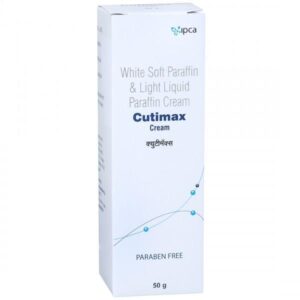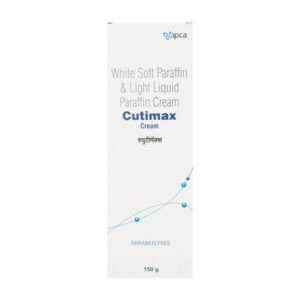PARAFFIN + LUBRICANT JELLY + PETROLEUM JELLY
Paraffin: Paraffin, also known as mineral oil or liquid paraffin, is a medication commonly used as a laxative and for the treatment of constipation. It is a clear, odorless, and tasteless substance derived from petroleum.
Paraffin acts as a lubricant and softener in the intestines, helping to ease the passage of stool. It forms a slippery film on the lining of the intestines, which reduces water absorption and improves the consistency of the stool, making it easier to pass.
The usual dose of paraffin for adults and children aged 12 years and above is 15-45 mL taken orally once daily at bedtime. The dose for children between the ages of 6 and 11 years is 5-15 mL once daily at bedtime, while for children between the ages of 3 and 5, the dose is 2.5-7.5 mL once daily at bedtime. The dose should be adjusted according to individual needs and response.
Possible side effects of paraffin may include stomach cramps, diarrhea, nausea, and vomiting. Prolonged use or excessive dosage can lead to dependency on laxatives and may interfere with the absorption of fat-soluble vitamins. It is important to consult a healthcare professional before using paraffin, especially in cases of persistent and chronic constipation.
It is worth noting that paraffin is contraindicated in patients with certain conditions such as intestinal obstruction, appendicitis, inflammatory bowel disease, and abdominal pain of unknown origin. It should not be used in patients who are bedridden or have difficulty swallowing without medical supervision.
As with any medication, it is crucial to follow the recommended dosage and consult a healthcare professional for appropriate use, possible drug interactions, and individual considerations.
Lubricant Jelly: Lubricant Jelly is a type of personal lubricant that is used to reduce friction and enhance sexual pleasure during intercourse. It is a non-medicated product that is applied topically to the genitals to provide lubrication.
The mechanism of action of Lubricant Jelly is quite simple – it acts as a lubricating agent by reducing friction between the skin or mucous membranes, allowing for smoother and more comfortable sexual activity. It creates a slippery surface that helps to decrease discomfort or irritation that can arise from dryness or lack of natural lubrication.
Lubricant Jelly is generally available in the form of a gel or jelly and is compatible with both latex and polyisoprene condoms. It is odorless, colorless, and generally water-based, making it easy to clean up and wash away after use.
The dose of Lubricant Jelly varies depending on personal preference and need. It is typically applied directly to the genitals before intercourse, with a sufficient amount applied to ensure proper lubrication. It is important to read and follow the instructions provided by the manufacturer.
As for side effects, Lubricant Jelly is generally considered safe to use for most individuals. However, some people may experience mild allergic reactions or skin irritation to the ingredients in the product. It is always recommended to do a patch test on a small area of skin before using any new product, especially if you have sensitive skin or a history of allergies. If you experience any persistent or severe side effects, it is important to discontinue use and seek medical attention.
Overall, Lubricant Jelly is a commonly used product to enhance sexual pleasure and reduce discomfort during intercourse. It is important to choose a high-quality product that is compatible with your needs and preferences. Consulting with a healthcare professional or pharmacist can also provide additional guidance and recommendations.
Petroleum Jelly: Drug: Petroleum Jelly
Use:
Petroleum Jelly, also known as petrolatum or Vaseline, is a semi-solid mixture of hydrocarbons derived from petroleum. It is primarily used as a skin protectant and moisturizer. It forms a barrier on the skin’s surface, preventing moisture loss and protecting against irritants, thus improving skin hydration and reducing dryness.
Mechanism of Action:
Petroleum Jelly works by creating an occlusive layer on the skin’s surface, which helps to seal in moisture and protect against external irritants. It acts as a barrier, preventing water from evaporating from the skin and reducing transepidermal water loss.
Dose:
Petroleum Jelly is usually applied topically to the affected skin area. The appropriate amount to use will depend on the size of the area being treated. It is typically applied as needed, but the frequency and duration of use should be determined by healthcare professionals or as directed on the product label.
Side Effects:
Petroleum Jelly is generally considered safe to use and is well-tolerated by most individuals. However, some people may experience minor side effects, including:
1. Skin irritation or redness: In rare cases, allergic reactions may occur, causing itching, rash, or swelling at the application site.
2. Acne: Some individuals with oily or acne-prone skin may experience clogged pores or breakouts when using petroleum jelly on the face. It is advisable to avoid using it on areas prone to acne or use a non-comedogenic alternative.
3. Inhalation risk: Inhaling high amounts or using petroleum jelly near the nose or mouth can potentially lead to aspiration pneumonia. Therefore, it is important to avoid ingesting or inhaling large quantities of petroleum jelly.
It is crucial to consult with a healthcare professional or read the product label for specific usage instructions and to ensure its suitability for your individual condition or skin type.


